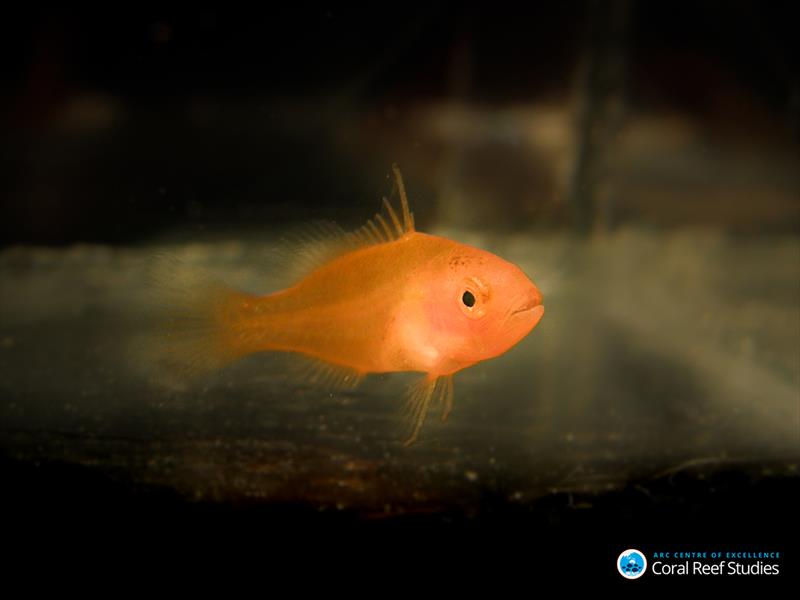
Tracking baby fish for better reef management
by Melissa Lyne 3 Aug 2019 08:48 UTC

Pre-settlement juvenile coral trout, (Plectropomus sp.) the species used in this study © Dr Colin Wen
A group of Australian scientists has created the world's first computer model that can accurately predict the movements of baby coral trout across the Great Barrier Reef.
The study confirms the importance of protecting the fish larvae produced in no-take zones for the health of fish populations within nearby fishing zones.
Tracking the lives of thousands of tiny baby fish is no easy task. But knowing where they'll settle and spend their lives as adults is invaluable data for the fishing industry and reef managers.
The accuracy of the model was tested in a recent study—led by Dr Michael Bode from the ARC Centre of Excellence for Coral Reef Studies (Coral CoE) at James Cook University (JCU)—that validates the computer predictions with field data.
This is a world-first achievement, combining the movement of ocean currents in and around the Great Barrier Reef with the genetic and behavioural data of fish.
"The study is a unique conservation collaboration between marine biologists, geneticists, and recreational fishers," Dr Bode said.
"This was a major field effort combined with some clever genetic work that involved matching baby fish to their parents to understand their movement," co-author Dr Hugo Harrison, also from Coral CoE at JCU, said. "The behaviour of fish in their first few weeks after hatching can really influence where they eventually settle."
The study focussed on coral trout, Plectropomus maculatus, which is one of the most valuable species of fish regularly caught on the Great Barrier Reef.
To test the computer model's predictions 1,190 juvenile and 880 adult fish were tracked—from spawning locations to settlement—across the reef for two years.
The computer model recreates the movements of baby fish across space and time by considering what depth the coral trout swim at, how fast they swim, and how they orient themselves as they grow older.
The results highlight the interconnectedness of reefs, and how important no-take zones are when considering future adult fish populations.
"Our results prove that the Great Barrier Reef's no-take zones are connected with invisible threads," Dr Bode said.
"Knowing how reefs are connected to one another means fishers and managers alike can identify which areas are likely to be most productive and need protecting," Dr Harrison said. "It's the babies from these protected areas that will continue to restock fish populations on neighbouring reefs where fishing is allowed."
Dr Bode said establishing the accuracy of these models is an important breakthrough.
"Our match between models and data provides reassuring support for using them as decision-support tools, but also directions for future improvement."
Paper: Bode M, Leis J, Mason L, Williamson D, Harrison H, Choukroun S, Jones G (2019). PLOS Biology. 'Successful validation of a larval dispersal model using genetic parentage data'. DOI: doi.org/10.1371/journal.pbio.3000380